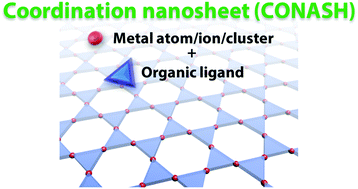Coordination nanosheets (CONASHs): strategies, structures and functions
Abstract
Nanosheets, which are two-dimensional polymeric materials, remain among the most actively researched areas of chemistry and physics this decade. Generally, nanosheets are inorganic materials created from bulk crystalline layered materials and have fascinating properties and functionalities. An emerging alternative is molecule-based nanosheets containing organic molecular components. Molecule-based nanosheets offer great diversity because their molecular, ionic, and atomic constituents can be selected and combined to produce a wide variety of nanosheets. The present article focuses on coordination nanosheets (CONASHs), a class of molecule-based nanosheets comprising organic ligand molecules and metal ions/atoms in a framework linked with coordination bonds. Following the Introduction, Section 2 describes CONASHs, including their definition, design, synthetic procedures, and characterisation techniques. Section 3 introduces various examples of CONASHs, and Section 4 explores their functionality and possible applications. Section 5 describes an outlook for the research field of CONASHs.

- This article is part of the themed collection: Most downloaded articles of 2017: Inorganic and Materials Chemistry


 Please wait while we load your content...
Please wait while we load your content...